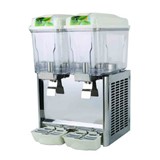While Australians' expenditure on alcohol continues to increase at a steady pace – growing by an annualised 2.8 per cent per year – IBISWorld general manager (Australia) Karen Dobie said overall consumption has actually fallen, decreasing by an annualised 0.7 per cent over the five years through 2013-14.
In 2013-14, IBISWorld expects overall alcohol spending to again rise by 2.8 per cent to $28.1 billion, or $1,193.70 per capita, while consumption is forecast to stay flat at 10.03 litres per adult. Looking to 2018-19, IBISWorld expects total spending to grow to $32.3 billion, while alcohol consumption is anticipated to fall to 9.98 litres per adult.
"The key reasons behind this trend of flat consumption and increasing spend are changing tastes and preferences, as well as rising costs," says Dobie. "Australia is traditionally a nation of beer drinkers, but our palates are changing. There is a growing preference for premium, expensive and boutique beer and wine, as well as a boom in cider consumption."
Australians are consuming more alcohol at home than at licensed establishments, with liquor retailers receiving a larger share of total alcohol spending than pubs, bars and clubs. Australians are forecast to spend $17.7 billion at liquor retailers in 2013-14, compared with $10.4 billion at pubs, bars and clubs. This trend is expected to continue over the next five years, with alcohol spending on-premises and at liquor retailers forecast to grow by an annualised 2.3 per cent and 3.1 per cent, respectively.
Alcohol spending in Australia – at home versus on-premises
| Spending | 2013-14 ($bn) | 2018-19 ($bn) | Annualised growth (%) |
|---|---|---|---|
| On-premises | 10.4 | 11.6 | 2.3 |
| Liquor retailers | 17.7 | 20.7 | 3.1 |
| Total | 28.1 | 32.3 | 2.8 |
Alcohol spending in Australia by product
| Product | 2013-14 ($bn) | 2018-19 ($bn) | Annualised growth (%) |
|---|---|---|---|
| Traditional beer | 9.3 | 8.7 | -1.2 |
| Craft beer | 1.1 | 1.3 | 2.8 |
| Cider | 0.9 | 2.2 | 19.5 |
| Wine (incl. sparkling) | 7.3 | 9.1 | 4.4 |
| Spirits | 5.9 | 6.8 | 2.8 |
| RTDs | 3.6 | 4.2 | 3.3 |
| Total | 28.1 | 32.3 | 2.8 |
When it comes to product performance, traditional beer continues to account for the highest share of alcohol expenditure, but a change is underway. Wine (including sparkling) is anticipated to overtake traditional beers as the number one product category by 2018-19, while cider will continue to outstrip other categories in terms of annual growth.
The bottom line on beer
While traditional beer continues to face challenges from declining overall consumption due to growing health awareness and changing consumer preferences, IBISWorld expects that the growing popularity of higher margin premium and craft beers will boost the overall industry. Major players are expected to benefit more than others as the industry consolidates over the next five years.
"Traditional beer brands are losing market share," said Dobie. "Australia's two big brewers – Foster's and Lion – are combating this by bringing in domestic production of premium foreign beers and acquiring local boutique brewers."
Cider consumption climbing
"Hot Australian summers, the stigma of high-carb beers and the crisp, refreshing taste of cider will all contribute to the forecast growth of 19.5 per cent per annum in cider," Dobie said.
Particularly popular with younger drinkers, cider is expected to grow from generating just $0.9 billion in revenue in 2013-14, to $2.2 billion in 2018-19.
Wine revenue sparkles
"The Australian wine industry is slowly recovering from oversupply and this – coupled with a growing consumer preference for wine – is expected to result in healthy revenue growth over the next five years," Dobie said.
Lighter white and sparkling wines continue to grow in popularity among female drinkers, while more-exotic varieties such as sangiovese and tempranillo are also gaining traction.
Spirits remain stable
With the high-alcohol content of spirits deterring some, IBISWorld expects that spirits' share of alcohol consumption will remain relatively flat over the next five years.
"Revenue growth for the spirits segment will predominantly be driven by sales of premium and prestige products, as Australians continue to cut their overall alcohol consumption," said Dobie.
RTDs on the rise
Following a period of falling consumption with the introduction of the alcopops tax in 2008-09, innovation and product development in the ready-to-drink spirits category is on the rise.
"The introduction of new flavours and low-carb versions of RTD cocktails has assisted this segment in regaining popularity – particularly among younger drinkers," Dobie said.
How does Australia compare?
Despite falling consumption levels, Australia ranks 44th in the world for per capita alcohol consumption, according to the World Health Organisation's latest Global Status Report on Alcohol and Health. Australia ranks above the United States and New Zealand, but is some way behind world leaders such as Moldova, Russia and South Korea.
On the global stage, traditional beer and wine continue to be favoured in most countries, with Australia leading the pack in the move towards craft beer and cider.



